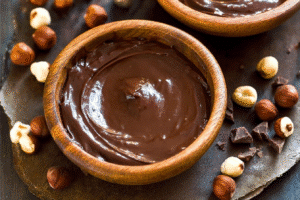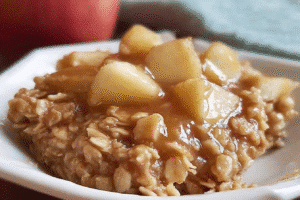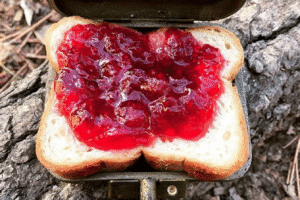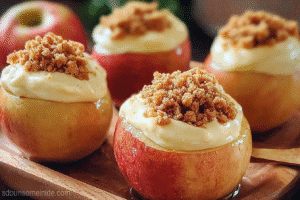
This started with me in the kitchen, pajama pants on, holding a mug of something warm and thinking, “Okay… this might actually be doing something.” After a weekend of junk food and zero vegetables, I woke up feeling heavy. Not sad heavy. Just jeans-don’t-fit heavy.
I opened the fridge, spotted a crusty lemon, and remembered this Japanese Mounjaro thing I saw in a comment thread. I kept seeing this Japanese Mounjaro thing pop up. Some kind of lemony tea people say helps with cravings. Some folks are all in. Others say it’s just internet nonsense.
I didn’t expect much. But I had a lemon sitting there and figured why not.
Took a sip. Made the face. Took another. It wasn’t terrible. Actually, it kind of hit the spot. Like my body went, okay, we’re trying here.
Hey, I’m Jason. If you’ve been curious about what’s in this Japanese Mounjaro drink, how it tastes, and whether it’s actually worth making, grab a mug and let’s find out.
Table of Contents
WHY YOU’LL LOVE THIS Natural Japanese Mounjaro recipe
- It’s basically a cozy reset in a mug: Like a little kitchen hug that says “you got this.”
- SOS-level easy: Warm water, lemon, ginger, boom. You’re practically a wellness wizard.
- Tastes like zingy comfort: That lemon-ginger vibe wakes you up in the best way. Morning brain? Handled.
- You can totally make it your own: Add cinnamon if you’re feeling spicy, skip the honey if you’re not into sweet. It plays nice with whatever mood you’re in.
- It’s weirdly satisfying: Not a miracle, but it kinda makes you feel like you’re doing something good for yourself. And that’s worth sipping on.
It’s worth saying again that my motto is RECIPES THAT REAL PEOPLE WOULD ACTUALLY MAKE. This one? Oh yeah. It’s got that everyday magic.
So, What’s the Deal with the REAL Mounjaro?
Okay, real talk. The actual Mounjaro? It’s not tea. It’s not lemon water. It’s a prescription medication approved by the FDA to treat type 2 diabetes. Some folks also use it for weight loss under medical guidance.
What we’re making here? It’s just a homemade drink that got picked up online because people started calling it a “natural alternative” to Mounjaro. It’s not the same thing. Just wanted to clear that up before we all start tossing words around like they mean the same thing. Now, back to our cozy mug moment.
Wait… So What’s in the Real Japanese Mounjaro?
Alright, let’s clear something up. The drink that’s gone viral lately, the one with lemon, ginger, and apple cider vinegar? That’s what folks online are calling “Japanese Mounjaro.”
But if you walked into an actual kitchen in Japan and asked for that, you’d probably get a very polite stare.
The real version, the one this whole trend borrows from, is made with:
- matcha,
- umeboshi (that’s a salty pickled plum),
- and kombu (dried seaweed).
It’s a completely different world of flavor, and I’ve created a complete guide with the authentic recipe right here. It’s earthy. It’s briny. It’s got serious ancient-wellness energy. And yeah! it’s an acquired taste. I tried it once. Felt like I was drinking the ocean… if the ocean had green tea and a tart attitude.
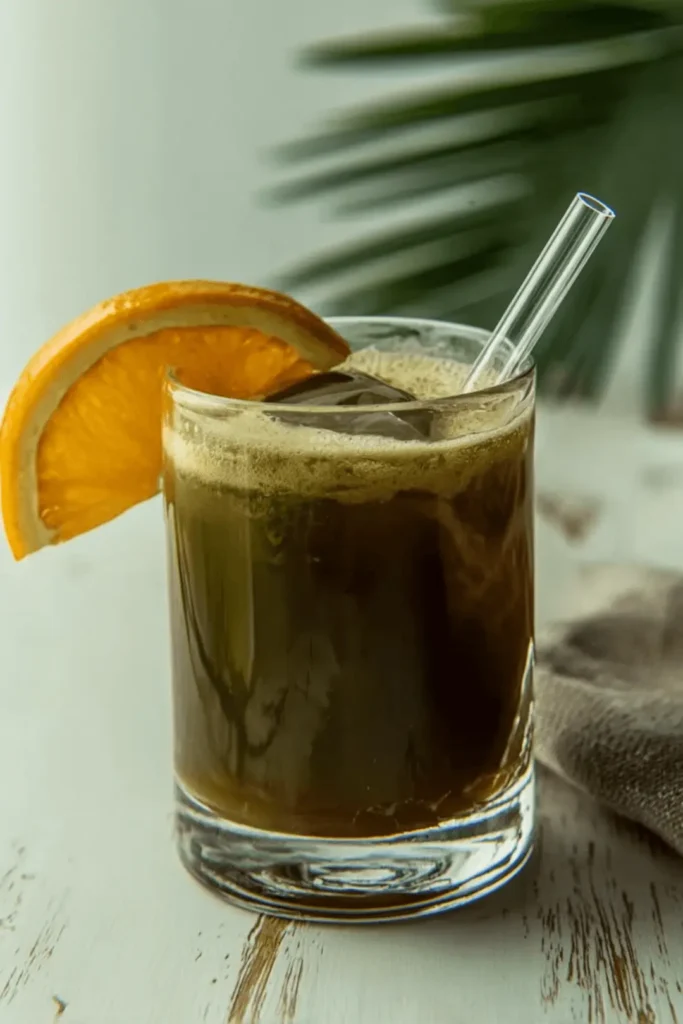
So what’s my version doing here? Honestly? I wanted something easier to sip. Something you could make with stuff already in your pantry. This is my lazy-Sunday, Western-style nod to the original, all the warm-and-cozy, without the seaweed steep.
Curious to try the real thing? You totally should. You can find my full step-by-step guide, photos, and sourcing tips for the authentic recipe here. But if you’re looking for a mellow morning ritual that doesn’t taste like you’re chewing kelp? This one’s for you.
Let’s Compare: Traditional Japanese Mounjaro vs. the “Japanese Mounjaro” Drink
| Traditional Japanese Mounjaro (Prescription Drug) | “Viral Japanese Mounjaro” Drink |
|---|---|
| FDA-approved medication for type 2 diabetes and weight loss | Viral lemon-ginger-ACV drink with online buzz |
| Contains Tirzepatide (GLP-1/GIP agonist) | Made with lemon juice, ginger, apple cider vinegar, warm water |
| Clinically reduces appetite and blood sugar levels | May help with hydration and digestion (not a medical treatment) |
| Prescription required, monitored by healthcare provider | Homemade, accessible to anyone |
| Side effects may include nausea, vomiting, or pancreatitis | May cause heartburn or enamel wear if not consumed carefully |
Curious? I Tried the Real Japanese Thing So You Don’t Have To (But You Might Want To)
Okay, so one quiet afternoon I was deep in my “what else is in the pantry” phase. Found a dusty little bag of kombu and figured… why not see what the real Japanese version of this Mounjaro thing is all about?
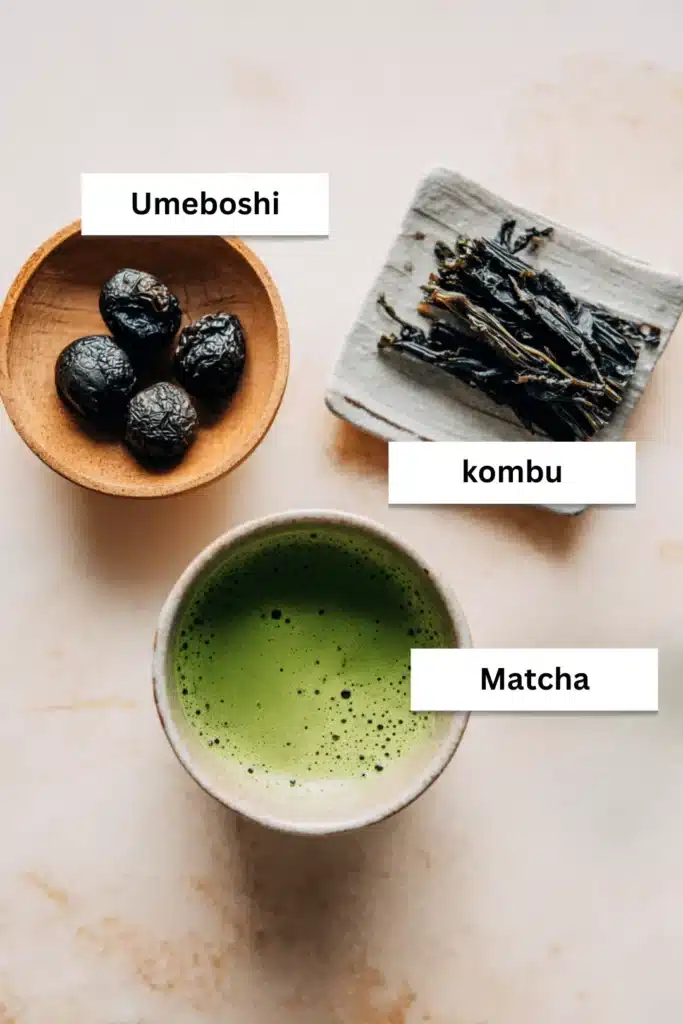
Here’s what I grabbed:
- A strip of kombu, maybe two inches long. Looked like seaweed jerky.
- A mug of hot water. Not boiling. Just hot like a bath you eased into.
- A teaspoon of matcha powder.
- Half an umeboshi plum. I mashed it with a fork till it looked like pink jam.
- A small scoop of grated fresh ginger.
What I did:
- Soaked the kombu in the hot water for five-ish minutes. Pulled it out, gave it a nod of thanks, and set it aside.
- In my favorite chipped mug, I dumped in the matcha, the mashed plum, and the ginger. Gave it a stir with a fork because all my whisks were in the dishwasher.
- Poured in the kombu water and stirred it again.
First sip? Wild. Like, salty meets earthy meets zing. No sweetness. No smooth talk. Just bold and old-school.
But honestly… kinda liked it. It felt like something that’s been around way longer than internet trends. Like a quiet, wise neighbor who doesn’t say much but always knows what to do.
How to Make the Viral Mounjaro Drink (The Lemon & Vinegar One)
Japanese mounjaro ingredients list
Water: I turn on the tap. Warm, not hot. Fill up a mug.
Lemon: I grab half a lemon and squeeze it in. That’s it.
Fresh ginger: Grated, sliced, chunked. Whatever works. I grab a piece about the size of my thumb, but do what feels right. This is what gives the Japanese Mounjaro tea that warm kick that makes you say “ohhh yeah.”
Apple cider vinegar: One tablespoon. Use the kind with the cloudy stuff in it. It smells a little intense, but that’s the part people swear by. Every Japanese Mounjaro ingredients list includes this, so don’t skip it.
Raw honey (if you’re into that): Just a touch. You don’t need it, but if the vinegar’s making your face do weird things, this smooths it out. Some folks sub it with a zero-cal sweetener, others skip it entirely.
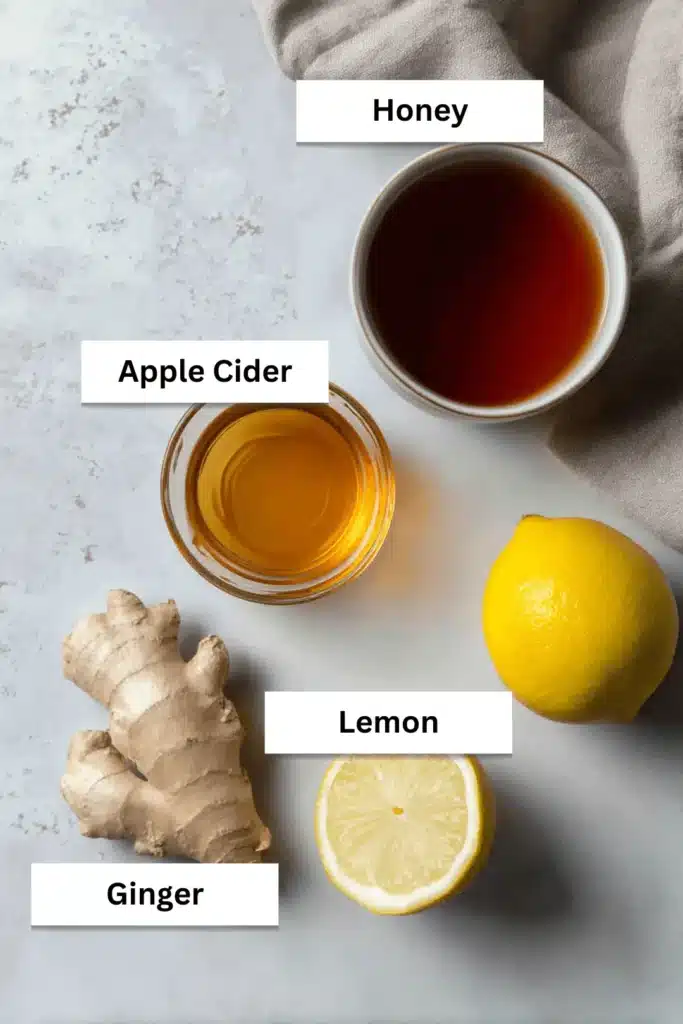
Do These Ingredients Actually Do Anything? (The 60-Second Science)
Let’s be real! I’m not out here claiming this drink is some miracle. But I did fall down a science rabbit hole (in pajama pants) and here’s the scoop. Quick and easy, like pouring a mug of warm water.
🍎 Apple Cider Vinegar
You’ve probably heard people hype ACV like it’s a miracle tonic. Here’s what actually holds up: a few small studies found that sipping about 1–2 tablespoons daily can help tame blood sugar and cholesterol.
“Vinegar at mealtime reduced insulin and glucose spikes.”
Sources:
My take: Yeah, it smells like cleaning solution, but that zing? Feels like a mini win over my donut habit.
🫚 Ginger
When my stomach’s doing somersaults or I’ve eaten one too many tacos, ginger’s my go-to. It’s backed by reviews showing it calms nausea—from pregnancy to post-procedure—and even helps digestion.
“Ginger significantly improved the symptoms of nausea compared to placebo.”
Sources:
My take: It warms the mug in my hands and quiets the rumble. Fancy? Nope. Effective? Heck yes.
🍋 Lemon
Lemon’s the easy MVP here: adds flavor, throws in some vitamin C, and might even give your hydration game a tiny boost. Cleveland Clinic backs it up, saying lemon water can support digestion and hydration.
“Lemon water may promote healthy digestion and hydration stats.”
Sources:
My take: Bonus: it makes the whole kitchen smell like I actually planned it. That’s comfy adulting if I ever saw it.
So, Is It Doing Something?
Look, none of this is magic. But sipping something warm that’s actually made of real things? That matters. If it helps your belly settle or your brain go “ahhh” for a second, I say that’s a win.
HOW TO MAKE IT
Step 1: I run the tap till it’s warm. Not hot, just warm. Fill a mug. Squeeze in whatever juice I can get out of half a lemon. Throw in a chunk of ginger. Splash of vinegar straight from the bottle. Stir it with a fork.
Step 2: I sip it. If I make a face, I grab the honey and squeeze in a little. Stir it again. Try not to spill it walking to the table. That’s it.
Step 3: Let it sit for a few minutes. I usually use that time to wipe peanut butter off the counter or yell “put your shoes on” for the fourth time.
Step 4: Sip it slow. It’s not a race. This is the part where the kitchen’s quiet, the fridge is humming, and I’m just standing there thinking, “Alright. Maybe today I’ve got it together.”
…and while I was standing there feeling like I might actually make a healthy choice today, I remembered this creamy green dream chillin’ in the fridge. My matcha tiramisu.
Oh yes. It’s velvety, light, and tastes like dessert went to therapy and came back calm. If you’re into that soft, earthy sweetness and love a no-bake treat that actually slaps, this one’s a fridge favorite for a reason.
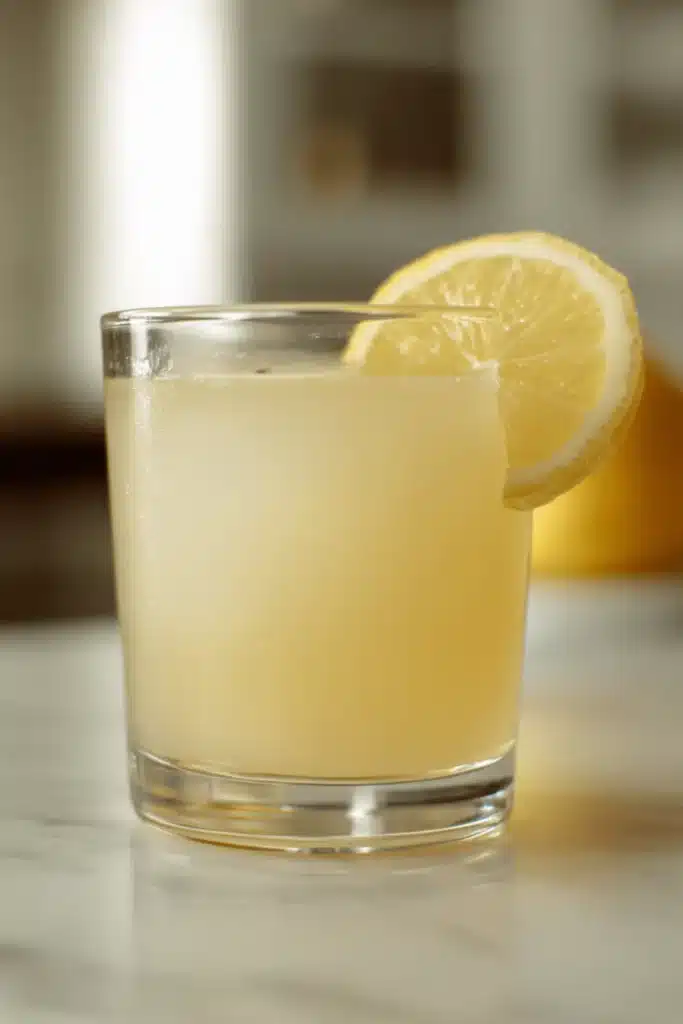
STORING YOUR SIPPY CUP AND WHAT TO EAT IT WITH
Where Do I Stash the Leftovers?
Fridge Vibes
If I’ve got some left, I just pour it into a jar or whatever container’s clean. Lid on, into the fridge. It’s fine for a day or two. When I want it again, I give it a shake, heat it up on the stove if I feel like it, or just drink it cold if I’m in a rush. No rules.
Don’t Freeze It
Yeah… don’t. I tried it once and it came out tasting like old lemon cleaner. The vinegar got all sharp and weird, and the whole thing just felt off. If you really wanna get ahead, freeze little cubes of lemon juice and ginger.
Then just add hot water and vinegar when you’re ready. That works. Freezing the whole drink though? Nope. Learned that lesson so you don’t have to.
What Do I Eat With This Thing?
Morning Mellow
This Japanese Mounjaro tea recipe goes great with something chill. Think toast with almond butter or a banana on the side. Nothing too wild. Just enough to get you going without crashing the party.
Okay so real talk. Some mornings, I want cozy and cleansing. Other days? I want something that looks like I picked it up at a fancy café but made it in five minutes flat wearing pajama pants.
That’s this strawberry matcha latte. It’s got layers like a dessert, but it sips like a dream. Sweet berries, creamy milk, that smooth matcha float… and yeah, it’s got protein so I can pretend I’ve got it all together. If my Japanese Mounjaro drink is the kitchen hug, this one’s the summer glow-up.
Before Lunch
I usually drink it while the kids are yelling about snacks and I’m pretending to meal prep. About 20 minutes before lunch, I pour a mug, sip it slow, and it kind of keeps me from eating the entire fridge door first.
Then I just make whatever’s around. Maybe a turkey sandwich. Maybe that leftover salad I swore I’d eat two days ago. Nothing fancy. Just enough to not feel like I blacked out and ate six granola bars.
That little mug moment? Sometimes it’s all I need to feel like I’m back on track. But when lunch rolls around or the snack cravings hit? I try to reach for something that feels like a treat but still pulls its weight.
Like my Chocolate Baked Protein Oats. They’re crunchy, chocolatey, and packed with protein. Basically, the kind of snack that makes you feel like, “Yeah, I’m doing this whole wellness thing… and it actually tastes good.”
Nightcap Style
Some folks sip the Japanese Mounjaro drink before dinner or even right before bed. If your stomach plays nice with vinegar at night, try it with something light and cozy like roasted sweet potatoes or a mellow soup. Just go easy. We’re not trying to start a fire in your chest.
Let me know when you’re ready for the next part. We’re about to have some fun with variations.
SWITCH IT UP: VARIATIONS AND LITTLE TRICKS THAT WORK
Fun Ways I Mess With It
Cinnamon: I was cold one morning and grabbed the cinnamon without thinking. Shook a little into the mug. Tasted kind of like I knew what I was doing. I don’t do it all the time. Just when the house feels chilly and I’m still in socks from yesterday.
Cayenne: If I’m half asleep, I’ll toss in a pinch of cayenne. It makes my eyes water a little but it gets me moving. Just don’t overdo it or you’ll be mad at me.
Green tea version: I swap the water for green tea if I’ve got a leftover mug sitting around. Gives it a little caffeine and makes it feel fancier than it is.
Turmeric twist: I’ll throw in a bit of turmeric if I’m already cooking with it. Pinch of black pepper too. I don’t go out of my way. Just when it’s already out on the counter.
No honey days: Some mornings I skip the honey. It’s not sweet. But it still hits right if you’ve had too much sugar the day before.
If you’re already vibing with this Japanese Mounjaro tea in the morning, you’ve gotta try my peanut butter latte too.
It started with me standing in the kitchen on a cold morning, out of creamer and dangerously close to losing it, so I grabbed a spoon of peanut butter and made it work. What came out?
A creamy, nutty little masterpiece that tastes like a peanut butter cup took a barista class. Sip it hot, sip it iced, just don’t skip it.
What Actually Helps
Don’t overdo it: Once a day is plenty. You don’t need to sip this all day. Your stomach will tell you.
Use a straw: If you drink it a lot, a straw helps with the lemon and vinegar on your teeth.
Keep it simple: Don’t chase the perfect version. Just make it how you like it. If it tastes okay and makes you feel good, that’s enough.
Sometimes after a mug of this lemony stuff, I want a treat that still feels kinda virtuous but also hits the sweet spot. Like, I did the warm lemon-ginger vinegar thing. I’m feeling good. But now? I want cold. Creamy. Something that tastes like sunshine on a stick.
That’s when I open the freezer and pull out one of my Viral Peach Ice Cream Bars. They’re no-churn, dipped in white chocolate, filled with soft peachy goodness, and honestly? Kind of my new love language. Try one and tell me it doesn’t taste like golden hour.
Is Japanese Mounjaro a scam?
It’s not a scam. It’s just not a miracle either. It’s lemon, ginger, vinegar, and water. That’s it. Nobody’s hiding secret ingredients. It’s a warm drink with a bunch of stuff that’s been around forever.
People online hype it up like it’ll melt the pounds off overnight. That part’s not real. But if you’re looking for something simple to sip in the morning that might help you slow down and feel a little better?
Sure. It can be that. Just don’t expect magic. And don’t skip meals hoping this will do all the work. It won’t.
Let’s Talk Salt, Spice, and Sip Regrets
So, the internet told you to add pink salt. Or cayenne. Or both. Look, I’ve been there. I’ve stood in my kitchen, holding a mug that smelled like salad dressing and regret.
Pink salt? It’s pretty. It’s got minerals. But it’s not magic. Cayenne? Yeah, it wakes you up, but it also made me cough so hard my dog got concerned.
If you love it, keep it. But if your tea starts tasting like a science experiment, maybe dial it back. This isn’t Hogwarts. It’s just a drink.
FAQS – Japanese mounjaro recipe
What is Japanese Mounjaro?
It depends who’s making it. The internet version? That one’s warm water, lemon, ginger, and apple cider vinegar. It’s what most folks are talking about when they say “Japanese Mounjaro” in a Facebook group or TikTok comment.
But if you dig a little deeper, like actual Japanese pantry deep, you’ll find the real-deal version. That one’s made with matcha, a bit of mashed umeboshi plum, and kombu seaweed steeped in hot water. Totally different vibe. A little salty, a little grassy, a lot more traditional. I have a dedicated post with the full authentic recipe here.
Basically, one’s the viral cousin. The other’s the quiet, centuries-old original. Try both. See what your mug says.
Curious how they actually stack up? Here’s a side-by-side breakdown
What is the recipe for Japanese Mounjaro?
The basic version goes like this. Warm water. Juice from half a lemon. A chunk of fresh ginger. A tablespoon of apple cider vinegar. Stir it all in a mug. Add a little honey if you want. Sip it slowly.
Does Japanese Mounjaro work?
It depends on what you mean by “work.” It’s not a weight loss miracle. But if it helps you drink more water, feel a little full before meals, or skip that sugary coffee? Then yeah, it works in its own way.
Is Japanese Mounjaro a scam?
Nope. It’s just a bunch of old-school ingredients that have been around forever. The drink is real. The hype around it can be a little much. If you’re expecting it to replace healthy eating or exercise, it’s not going to do that.
What are the Japanese Mounjaro ingredients?
Depends which one you’re talking about! The viral version making the rounds online is the one with warm water, lemon juice, grated ginger, and apple cider vinegar. It’s easy, cozy, and kind of a hug in a mug.
But the real-deal Japanese version? That one’s got matcha, umeboshi (a salty pickled plum), and kombu (a strip of dried seaweed). Way different vibe. Earthier, saltier, and definitely more traditional.
Want to see how they compare? Check out the side-by-side here
For more cozy, comfort-food goodness, come hang out with me on Facebook and Pinterest where the crumbs, tips, and love keep on rollin’.
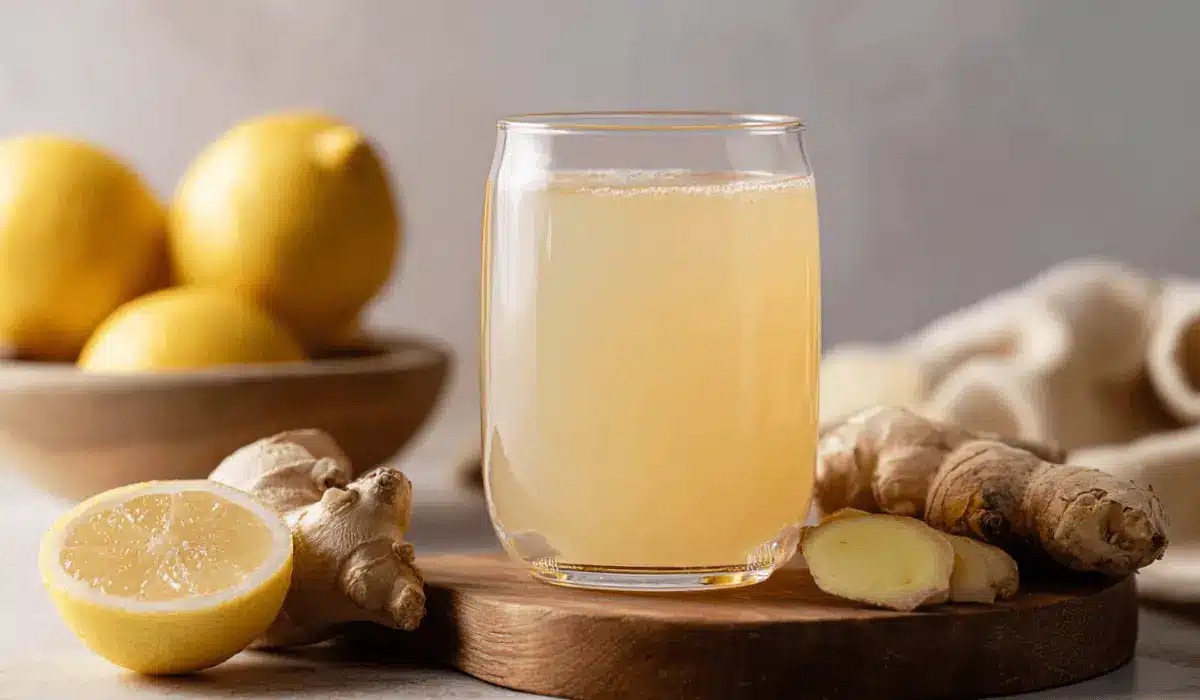
My 5-Minute Viral “Japanese Mounjaro” Recipe (Lemon & Ginger)
Ingredients
Method
- Run the tap until the water is warm (not hot) and fill a mug with about 240 ml of water.
- Squeeze the juice from half a lemon into the mug. Add the grated or sliced ginger and apple cider vinegar.
- Stir everything together with a spoon or fork. If the taste is too strong, add raw honey and stir again.
- Let the drink sit for a few minutes, then sip it slowly and enjoy your cozy kitchen moment.

